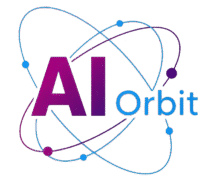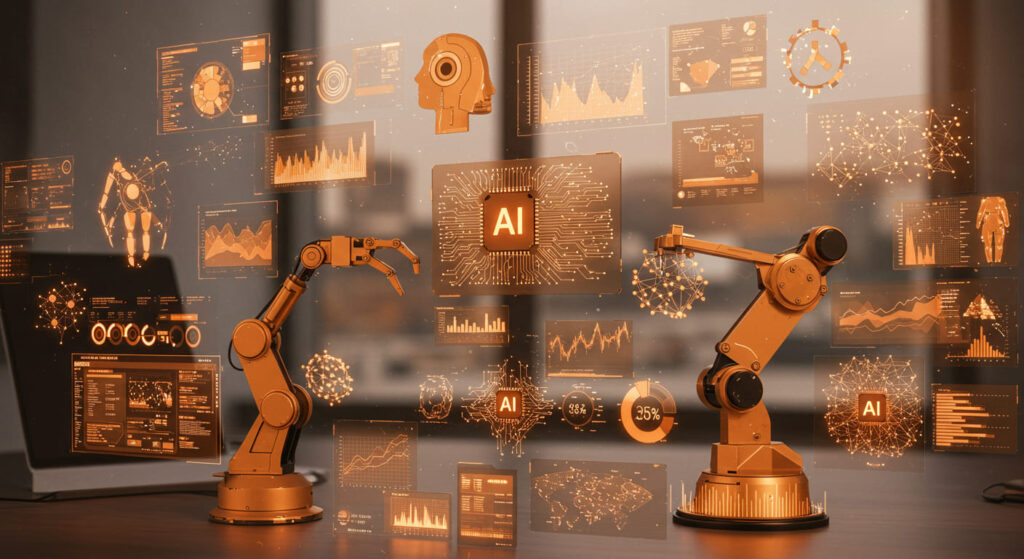HUMAN VS. AI: WHAT DO WE DO WHEN WE CAN NO LONGER TELL THE DIFFERENCE?
The rapid acceleration of artificial intelligence (AI) is transforming our world at an unprecedented pace. From sophisticated language models that craft compelling narratives to generative AI that conjures photorealistic images and videos, the capabilities of machines are no longer confined to the realm of science fiction. We are witnessing the dawn of an era where AI doesn’t merely assist human endeavors but begins to emulate, and in some cases, even surpass human output in ways that challenge our very definitions of creativity, authenticity, and intelligence. This raises a profound and increasingly urgent question: what happens when the distinction between human and artificial intelligence blurs to the point of indistinguishability? How do we navigate a reality where the digital and the organic become seamlessly interwoven, and the very concept of “real” is up for re-evaluation? This comprehensive exploration delves into the challenges, ethical dilemmas, and potential pathways forward in a world where telling the difference between human and AI becomes an increasingly complex task.
THE PROMISE AND PERIL OF INDISTINGUISHABLE AI
For decades, the Turing Test, proposed by Alan Turing in 1950, served as a theoretical benchmark for machine intelligence. It posited that if a machine could converse in a way indistinguishable from a human, it could be considered intelligent. Today, with advancements in natural language processing (NLP), machine learning, and deep neural networks, AI systems are not just passing rudimentary versions of the Turing Test; they are excelling at tasks once thought to be exclusively human domains. We see AI drafting legal briefs, composing music that evokes emotion, generating art indistinguishable from human creations, and even engaging in complex, empathetic conversations.
The implications of this growing indistinguishability are vast and multifaceted. On one hand, it opens up incredible possibilities for efficiency, accessibility, and problem-solving. AI could power hyper-realistic educational simulations, provide personalized therapeutic support, or even aid in complex scientific discoveries by processing data at speeds unimaginable to humans. Imagine AI assistants that truly understand nuance and context, making our daily lives smoother and more productive.
However, the peril is equally profound. When we can no longer tell if we are interacting with a human or a machine, the foundational pillars of trust, authenticity, and accountability begin to erode. This isn’t just about identifying a chatbot on a customer service line; it’s about discerning the origin of information, the intent behind a message, or the true nature of a digital entity. This blurring of lines forces us to confront fundamental questions about truth, identity, and the very fabric of our social interactions. The ethical frameworks that govern human interaction are suddenly ill-equipped to handle a world where digital ghosts can mimic consciousness and exert influence.
ETHICAL AND SOCIETAL IMPLICATIONS OF BLURRED LINES
The inability to distinguish between human and AI interactions gives rise to a cascade of ethical and societal challenges that demand immediate attention and proactive solutions.
THE EROSION OF TRUST AND AUTHENTICITY
Perhaps the most immediate and pervasive threat is the erosion of trust. In an environment saturated with AI-generated content—whether text, images, or video—determining what is real and what is synthetic becomes incredibly difficult. This vulnerability extends to every facet of society:
PSYCHOLOGICAL AND SOCIAL IMPACTS
Beyond the practical dangers, the constant ambiguity about who or what we are interacting with can have profound psychological effects.
LEGAL AND ECONOMIC RAMIFICATIONS
The legal and economic systems are ill-prepared for a world where human and AI outputs are indistinguishable.
NAVIGATING THE NEW REALITY: STRATEGIES FOR ADAPTATION
While the challenges are formidable, they are not insurmountable. Proactive measures, thoughtful policy-making, and a collective commitment to ethical development can help us navigate this complex future.
FOSTERING DIGITAL LITERACY AND CRITICAL THINKING
The first line of defense is an educated populace. Digital literacy must evolve beyond basic computer skills to encompass a critical understanding of AI’s capabilities and limitations.
DEVELOPING ROBUST REGULATORY FRAMEWORKS AND ETHICAL AI
Governments and international bodies must work collaboratively to establish comprehensive regulations for AI development and deployment.
REDEFINING HUMAN VALUE AND PURPOSE
As AI takes on more cognitive tasks, humanity must reflect on its unique contributions and adapt to a changing labor landscape.
THE FUTURE OF HUMAN-AI COEXISTENCE
The journey into a future where AI and humans are increasingly indistinguishable is not merely a technological one; it is a profound philosophical and societal transformation. We stand at a crossroads where the choices we make today will determine the trajectory of our civilization. The goal should not be to halt the progress of AI, which is both unrealistic and potentially detrimental to human advancement, but rather to steer its development and integration with wisdom, foresight, and a deep commitment to human values.
This future demands that we embrace AI as a powerful tool while simultaneously reaffirming the irreplaceable essence of humanity. It means prioritizing the development of AI that augments human capabilities, rather than supersedes human agency. It calls for an ongoing, global dialogue involving technologists, ethicists, policymakers, educators, and the public to shape a collective vision for a world where AI serves humanity’s best interests. We must remember that while AI can simulate consciousness, it does not possess it. It can mimic empathy, but it cannot feel. These distinctions, however subtle they may become, are what ultimately define us.
CONCLUSION
The question of “what do we do when we can no longer tell the difference?” is not a distant hypothetical; it is a pressing reality unfolding before our eyes. The blurring lines between human and AI capabilities present unprecedented challenges to trust, authenticity, and our very understanding of what it means to be human. However, this era also offers immense opportunities for growth, innovation, and a deeper appreciation of our unique human qualities. By investing in robust digital literacy, establishing comprehensive ethical guidelines and regulations, promoting transparency in AI development, and fundamentally rethinking the value of human contribution, we can navigate this complex landscape. The future is not one where humans are rendered obsolete by superior machines, but one where a discerning, adaptable, and ethically grounded humanity can coexist, collaborate, and thrive alongside increasingly sophisticated artificial intelligence. Our ability to tell the difference may diminish, but our responsibility to guide this evolution with foresight and integrity must only grow stronger.

